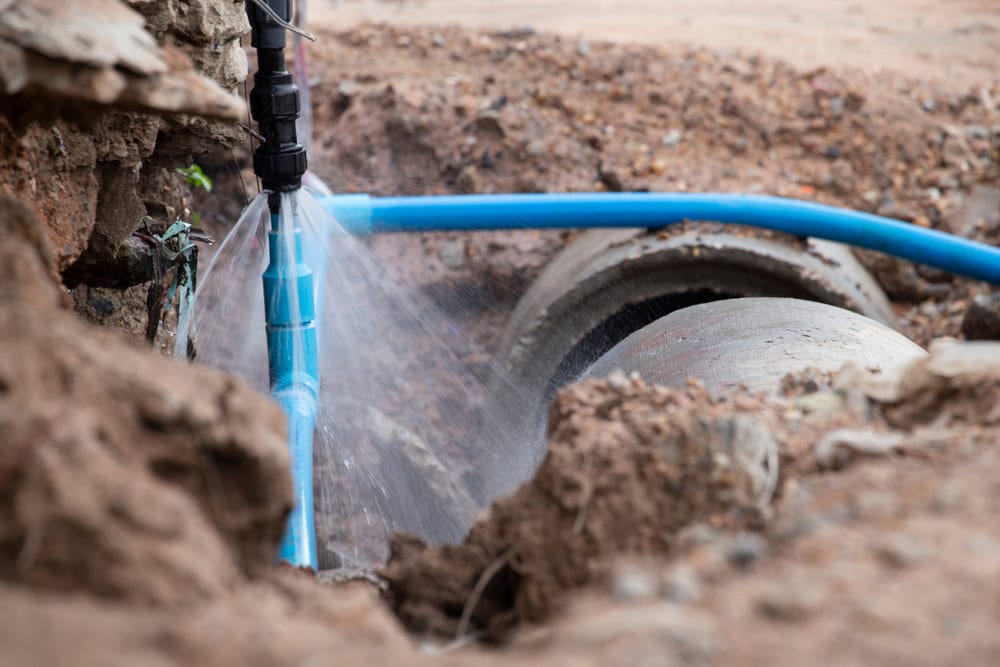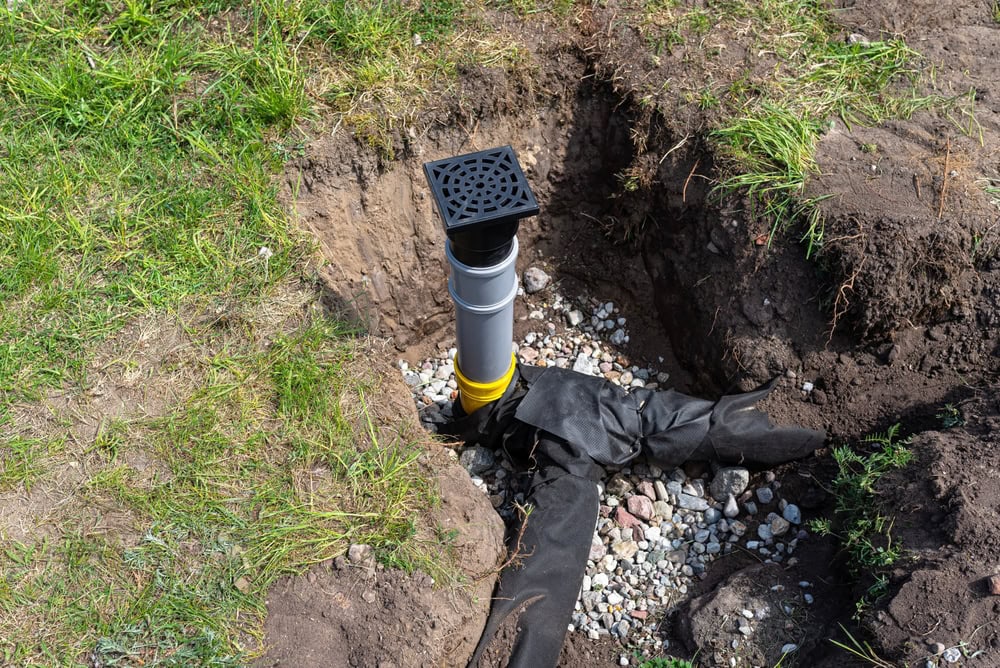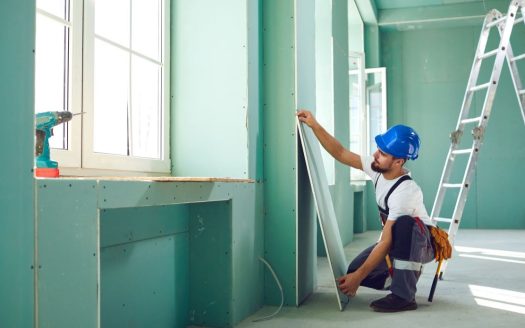How to open the sewage line: a homeowner's step-by-step guide
[ad_1]
The blocked sewer line is not just a concern – backup can cause bad odors and expensive water damage. Good news? You can correct yourself. Even if you own the owner or a There are steps you can go on your own to combat soft-medium blockages. You will learn how to open a sewage line without calling in a Pro in a Pro in the article of Redf.

Your sewage line is blocked
Recognizing the early warning signs of a sewage line can help resolve the issue before complete blown disaster. Total indicators include:
- More than one drainage: If more than one drainage (eg toilets, sinks, shower) slowly overturned or dry in your home, it can be on the main sewer line.
- Chewing gum: To hear the hearing or boiling sounds during the flow of the toilet or flowing water can signal the air can be trapped by a traffic jam in the sewer line.
- Unclean odors: A strong, unpleasant odor coming from drains (often resembles rotten eggs) can be a sign that wastewater is properly flowing through the sewer line.
- Water backup in low fittings: When you work a device like a washing machine, the water backup in the low-level toilet or shower indicates a possible traffic jam in the main line.
Security measures and preparations
It is dangerous to work on sewerage if proper security measures are not taken. Before any start of any Always to open the sewage line:
- Wear a protective gear: Wear heavy gloves, protective sunglasses and rubber boots to avoid contact with sewerage and bacteria.
- Water down: If possible, turn off the main water supply to reduce the risk of water damage and sewage.
- Ventilate the area: Open windows or use fans to destroy fog and smells.
- Collect the correct tools: The presence of the necessary equipment to obtain will facilitate the process and minimize health risks.
Basic tools and materials
To effectively open your sewer line, you will probably need the following tools and materials:
- Pipe key or adjustable key – For opening and closing the main sewer cleaning cap.
- Plumbing Auger (Drene Snake) – a means of a cable designed to pass or remove with clogging in the sewerage tube. You probably used it in the past.
- Hose – To whip the guzzled garbage.
- Bucket or plastic sheet – Catch or be any water or sewer overflowing when you open the cleanliness.
- Protective gear – Heavy gloves, rubber boots, sunglasses and perhaps face mask.
- Lantern – to check inside cleanliness and see if an obstacle is visible.
Pro Type: If you suspect a wide wood roots or seriously damaged pipe, you may need specialized tools like a mechanical root cutting or even hydro jetting equipment. In most cases, these are managed by the best professional.
Step-by-step guide to unlock sewer line
1. Find the sewage cleanliness
Most homes have basic sewage cleaning that allows direct access to the sewer line. Typically, it is cleaned:
- Just outside the foundation of your home, often near the bathroom or kitchen
- In the basement (in some older houses)
- Near the street or sidewalk depending on local codes
Tip: Cleaning can generally be determined by a round or square cap labeled “purification” or “sewage”.
2. Open cleanliness carefully
- Place a bucket or plastic layer around the cleaning cap to catch any cast.
- Use a pipe key or adjustable key slowly Discourage the cleaning cap.
- Stand from side to side to prevent potential sewage transportation. If you empty the lid and hear the liquid under pressure, or see it again, and wait again before continuing.

3. Use a plumbing auger or dryer
- Enter Auger: Push the drainage until the end of the snake faced with resistance.
- Run Auger: Rotate the handle or stick the engine (for a motorized snake) or stuck on top of clutter.
- Blockage: Drag Augeer back and forth to loosen the trash. Connect each other to overcome any waste caught in the cable.
- Re-enter if necessary: Repeat the process until you can no longer feel resistance in the line.
Pro Type: Avoid the cable very aggressively, because this can damage the pipeline if the congestion is weak or weakened with pipe corrosion or tree roots.
4. Whisk the line
After breaking or removing the congestion:
- Add a Garden Hose Slowly flooded water with a water source and a line to whip any garbage.
- See the flow: If water pursues smoothly, the blockage is cleared.
5. Try your dren
- Provide cleaning cover again to the ground.
- Open water In your house (sinks, pipes and toilets) in many devices to check the normal discharge of everything.
- Listen to gurgling noises, check slow drain and check no water backup.

To call a professional
If you have tracked all the steps above and you are a sewer line clutter – or a violent blockage sign in a licensed plumber. Professionals can provide:
- Video camera checks: Security and good security and good security.
- Hydrating: A powerful method (like wood roots) using high-pressure water to clean more stubborn or wide traffic jams.
- Pipe repair or replacement: If your tube is damaged by the repair, you can advise on professional trenchless or traditional excavations.
Prevents the future sewer line
Prophylactic maintenance, sewer line is the key to preventing backups and protection of your property:
- Avoid the washing of problem items: Never flush paper towels, baby wipes or sanitary objects – they are quickly built and blocked.
- Use enzyme-based treatments: Regularly treat organic waste and treat the enzyme-based products designed to clean the lines.
- Control the roots of wood: If you have adult trees near your sewer line, consider taking an annual inspection to catch and solve root intervention.
- Throw fat oils responsibly: Pour fat oil and lubricate drainage, can cause moneal blockages. Instead, use fat in a container and throw in the trash.
- Schedule Daily Inspections: An annual inspection by Professional Tesaver can catch small problems before exacerbating.
Frequently Asked Questions About Opening Sewage Line
Can I use chemical drainage cleaners to open my sewer line?
Are not generally recommended. Chemical drainage cleaners can corrosion in pipes and often ineffective for large traffic jams. They also break health and environmental risks.
How long should I clean my main sewer line?
Ideally, if you often have clogs or older plumbing, a professional inspection and cleaning table once. Otherwise, a check can be enough every 2-3 years.
Is Hydro Jetting, safe for all sewage lines?
Hydro Jetting is effective and safe for the most modern sewer pipes. However, if your system is very old or severely damaged, high-pressure water can further increase the weaknesses. Always consult with a professional.
If I can't find my sewage cleanliness, what do I do?
If you can't find a cleansing in your property, check your home check report or contact a local plumber. In some municipalities, cleaning can be close to the sidewalk or street.
-
Will the landlord insurance sewer line clog?
The scope varies through politics. Some insurers include sewer line backups in a standard policy, while others require an additional rider. Check your policy documents or contact your insurance provider for details.
Constructed sewage lines can be stressed, but many homeowners can work with small blocks with correct tools and knowledge. Success comes to know early detection, proper technique and calling a pro. If DIY efforts fail or seriously damage, you can diagnose a licensed plumber and save time and money. It can prevent a larger, expensive repairs to move quickly. Save plumbing, plumbing, top form and follow these steps to prevent future blockages.
[ad_2]
Table of Contents





